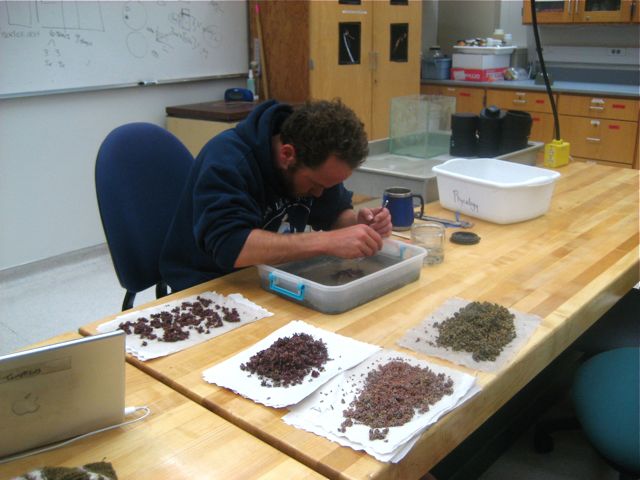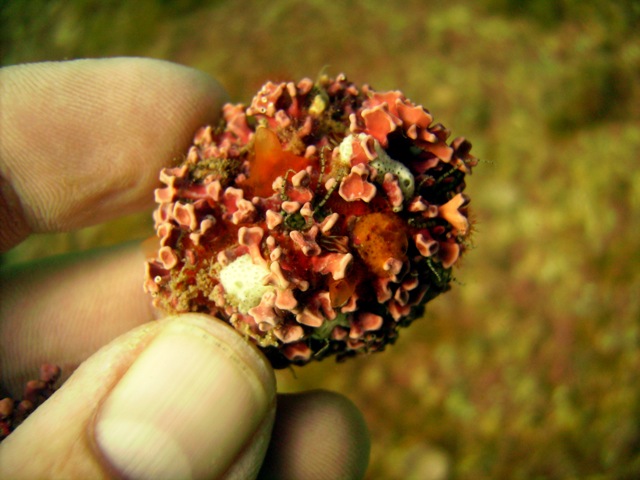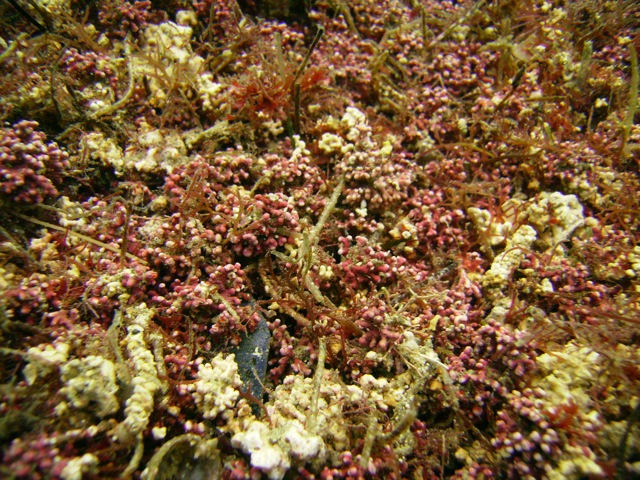
By Catherine Drake, Invertebrate Zoology Laboratory
On Tuesday November 15, 2011, Friends of MLML hosted a talk with one of MLML’s own, Dr. Mike Graham, author of “The Essential Naturalist.” An alumni of Moss Landing Marine Laboratories, he then obtained his Ph.D. at Scripps Institute of Oceanography. Then, Dr. Graham came back to the MLML and is the advisor for the phycology (seaweeds) lab.
Nowadays with the internet, it can be easy for researchers to overlook journal articles that are 100, 50, even just 20 years old. With marine science librarian Joan Parker and Dr. Paul Dayton, Dr. Graham compiled older scientific articles—some from over one hundred years ago—into “The Essential Naturalist.” Not only were these articles extremely significant in a scientific context, but they also told great stories for those who enjoy nature. Dr. Graham stresses that scientists before us were just as smart as we are and they thought about all that goes into scientific research—methods, data analysis, etc.—just as we do now. So, all we need to do is dig a bit to find articles that greatly contributed to science, and are hence indispensable for anyone who considers themselves naturalists!
Below is a conversation with Dr. Graham about “The Essential Naturalist”:
Where did you get the inspiration for “The Essential Naturalist”?
Well it stemmed out of a series of conversations I had with my PhD advisor (and “Essential Naturalist” co-editor) Paul Dayton. I was looking into the old literature while studying for my PhD qualifying exam and kept uncovering old papers that seemed to say exactly what more modern papers were saying. And every time I told Paul about one of these papers, he would respond with a comment about another paper that people had forgotten as well. So after a while we just started talking about how modern ecologists were beginning to lose their roots, and how great it would be to resurrect some of these papers.
How did you decide which journal articles to place in the book?
Well, in addition to all of the search I did on my own, plus the additions from Paul and Joan (my fellow co-editors), I polled over 100 ecologists and evolutionary biologists as to what their favorite Natural History gems were. This resulted in a long list, some papers of which were easily discarded because they didn’t fit our intended format for the book. But we ended up with about 150 papers that were good. Then I simply started working through them all to see which had compelling readings that could be excerpted and of interest to a broader audience. I tested some of the materials against my own kids and students to see what was boring, as well as my father Jon who loves natural history and was a good sounding board. The rest of the choices were simply from intuition as to what would fly.
Why do you think scientists and researchers tend to disregard, even sometimes inadvertently, journal articles that were published 50+ years ago?
Out of sight, out of mind. Its harder to keep track of the literature today with 1000s of articles published per year. Everyone has deadlines. So the easiest thing is to either Google your keywords of interest, or cite a paper that just happened to be on your desk, recommended by a colleague, or in a journal you subscribe to. All of these make it harder to find the older papers.

Can you tell us one of your favorite stories in “The Essential Naturalist”?
I like them all, for different reasons. But the one that I recite the most is the story from Humboldt of how the native South Americans showed him how to fish for electric eels using stampeding horses. The story is vivid. My kids love hearing me tell it. And it’s so visual that you just cant help telling the story in such an exciting voice. It’s a lot of fun.




